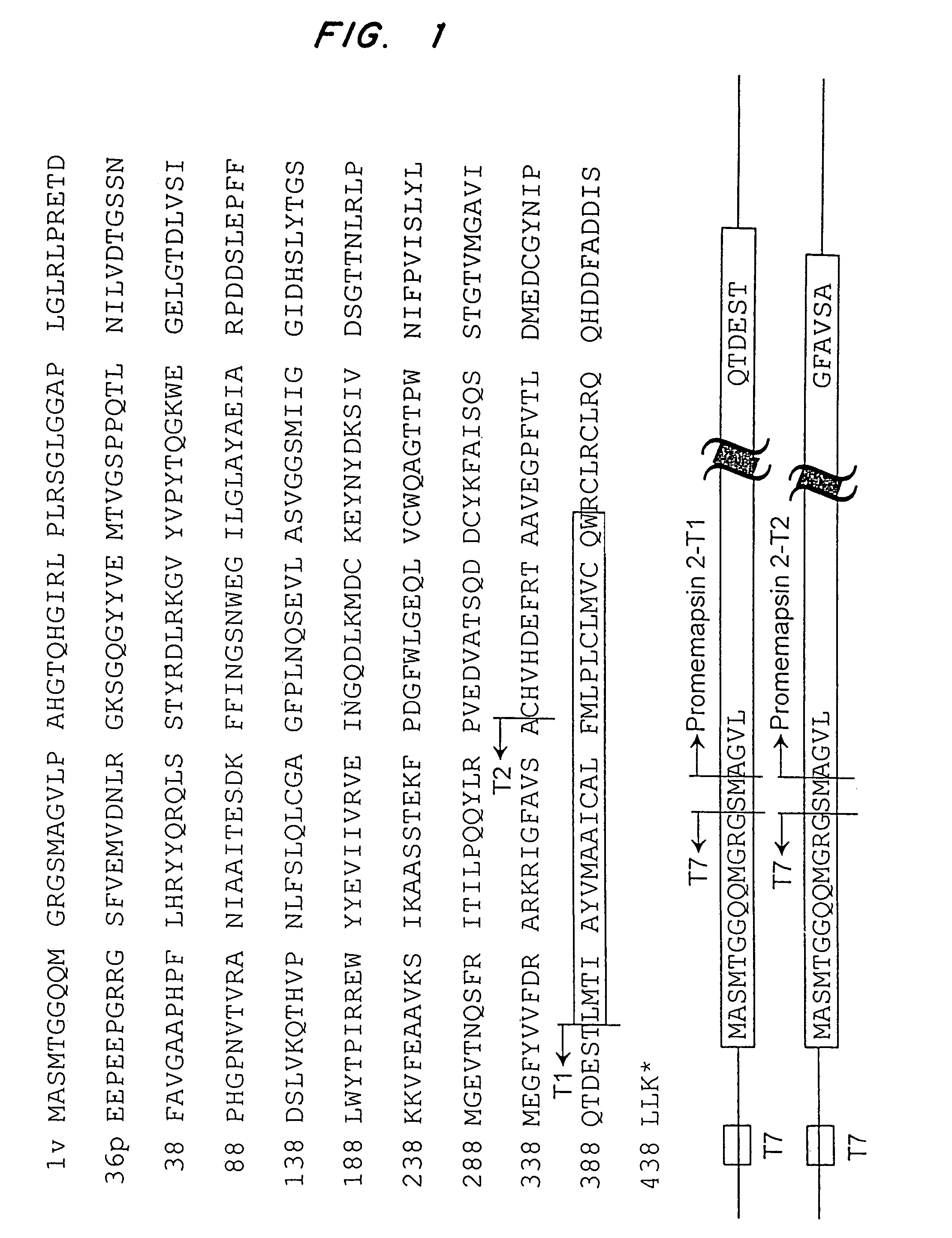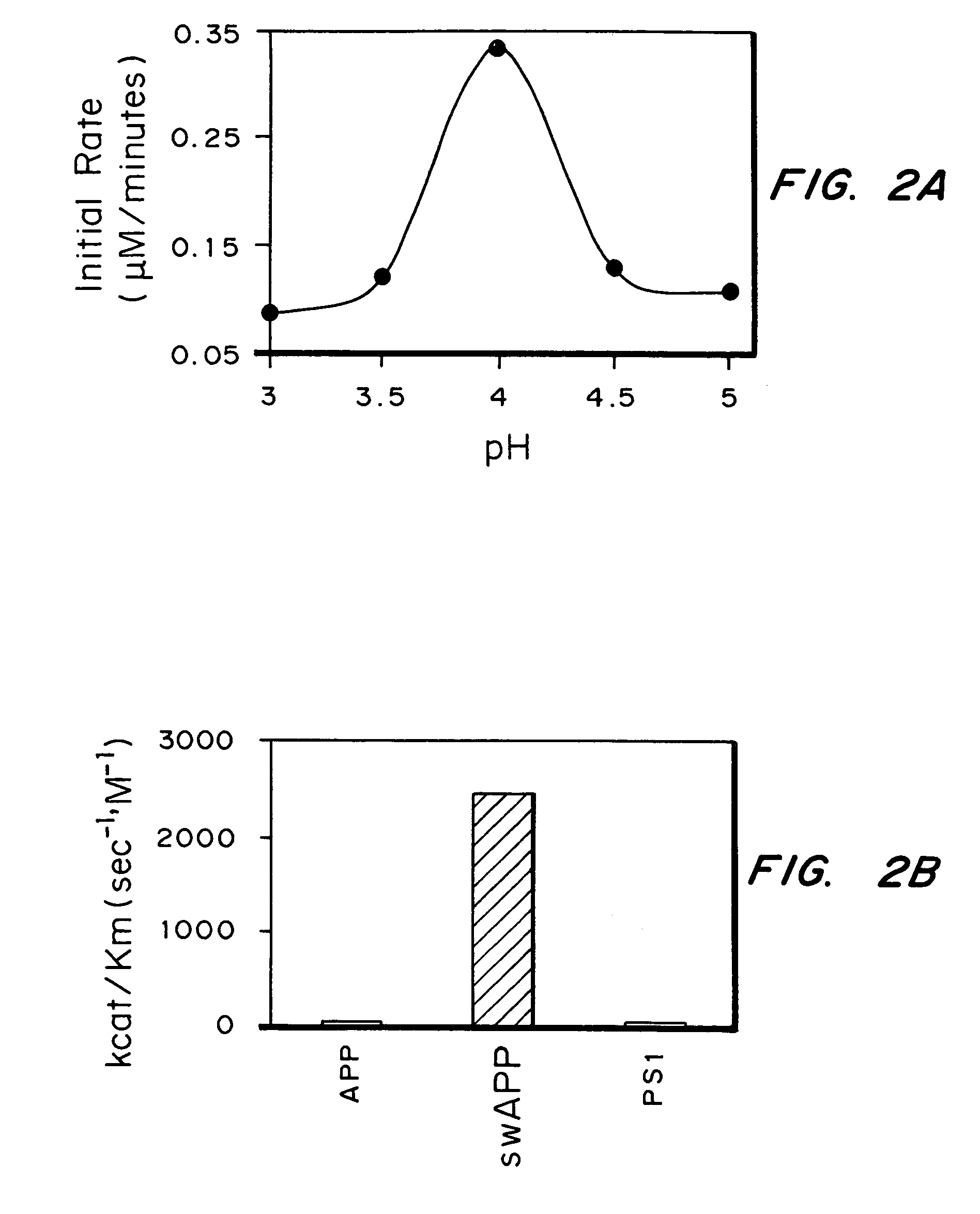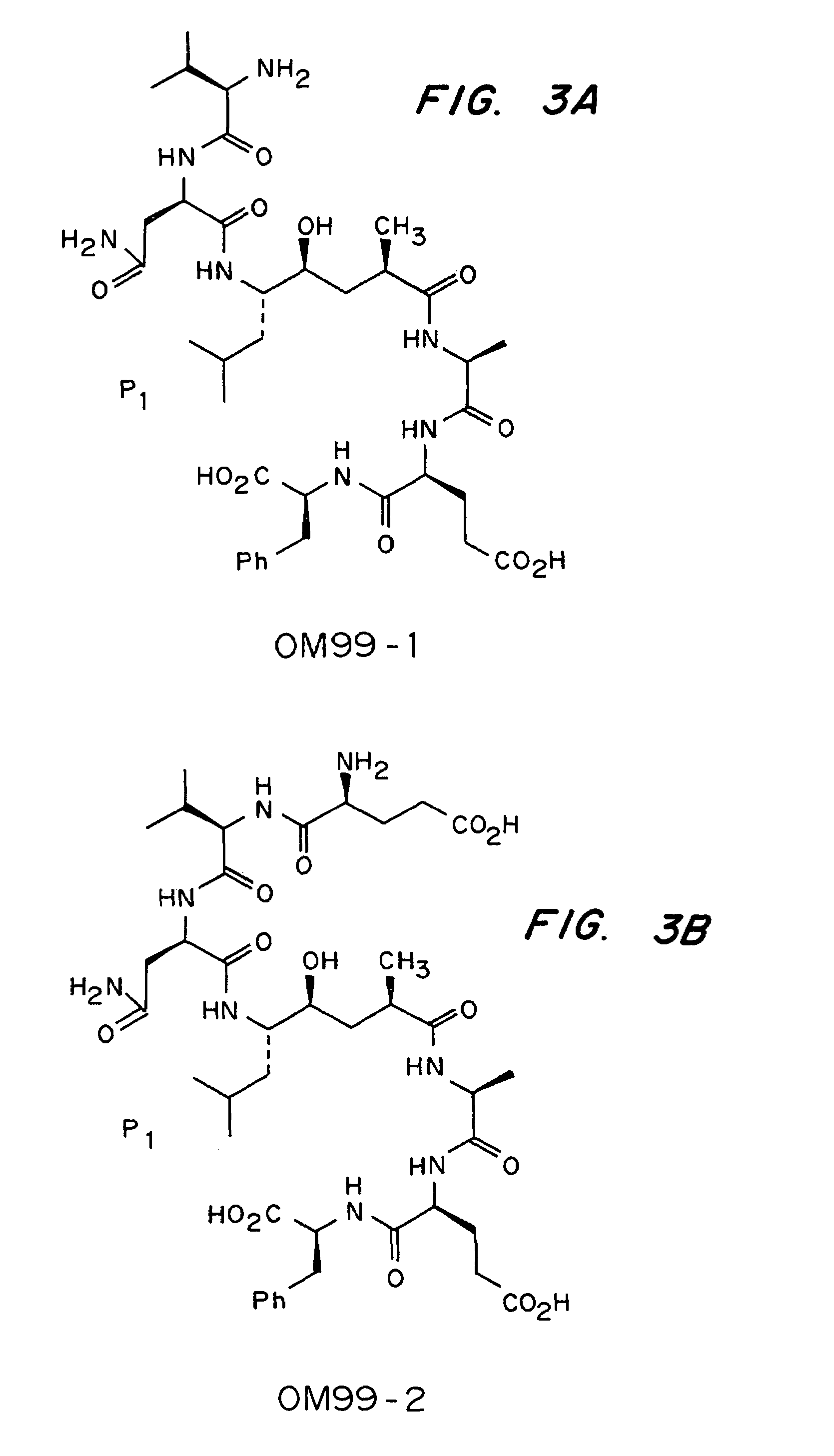Inhibitors of memapsin 2 and use thereof
a technology of inhibitors and memapsins, applied in the field of inhibitors of memapsins, can solve the problems of memory loss, inability to function as normal individuals, dementia in elderly people, etc., and achieve the effects of improving drug properties, reducing the molecular weight of inhibitors, and increasing inhibition potency
- Summary
- Abstract
- Description
- Claims
- Application Information
AI Technical Summary
Benefits of technology
Problems solved by technology
Method used
Image
Examples
example 1
Cloning of Memapsin 2
[0108]1. Cloning and Nucleotide Sequence of Pro-Memapsin 2.
[0109]New sequences homologous to human aspartic proteases were found in the following entries in the EST IMAGE database: AA136368 pregnant uterus ATCC 947471, AA207232 neurepithelium ATCC 214526, and R55398 human breast ATCC 392689. The corresponding bacterial strains: #947471, #214526, and #392689 containing the EST sequences were obtained from the ATCC (Rockville, Md.). The sequencing of these clones obtained from ATCC confirmed that they contained sequences not identical to known human aspartic proteases. The completed sequences of these clones assembled into about 80% of prepro-M2 cDNA. Full length cDNAs of these clones were obtained using the following methods.
[0110]The Human Pancreas Marathon-Ready cDNA (Clontech), which is double-strand cDNA obtained by reverse-transcription, primer addition, and second strand synthesize of mRNA from human tissues, was used as template for PCR amplification. An a...
example 2
Distribution of Memapsin 2 in Human Tissues
[0125]Multiple tissue cDNA panels from Clontech were used as templates for PCR amplification of a 0.82 kb fragment of memapsin 2 cDNA. The primers used for memapsin 2 were NHASPF1 and NHASPR2. Tissues that contain memapsin 2 or fragments of memapsin 2 yielded amplified PCR products. The amount of amplified product indicated that memapsin 2 is present in the following organs from most abundant to least abundant: pancreas, brain, lung, kidney, liver, placenta, and heart. Memapsin 2 is also present in spleen, prostate, testis, ovary, small intestine, and colon cells.
example 3
Expression of Pro-Memapsin 2 cDNA in E. coli, Refolding and Purification of Pro-Memapsin 2
[0126]The pro-memapsin 2 was PCR amplified and cloned into the BamHI site of a pET11a vector. The resulting vector expresses pro-memapsin 2 having a sequence from Ala-8p to Ala 326. FIG. 1 shows the construction of two expression vectors, pET11-memapsin 2-T1 (hereafter T1) and pET11-memapsin 2-T2 (hereafter T2). In both vectors, the N-terminal 15 residues of the expressed recombinant proteins are derived from the expression vector. Pro-memapsin 2 residues start at residue Ala-16. The two recombinant pro-memapsin 2s have different C-terminal lengths. Clone T1 ends at Thr-454 and clone T2 ends at Ala-419. The T1 construct contains a C-terminal extension from the T2 construct but does not express any of the predicted transmembrane domain.
[0127]Expression of Recombinant Proteins and Recovery of Inclusion Bodies
[0128]The T1 and T2 expression vectors were separately transfected into E. coli strain B...
PUM
| Property | Measurement | Unit |
|---|---|---|
| diameter | aaaaa | aaaaa |
| pH | aaaaa | aaaaa |
| pH | aaaaa | aaaaa |
Abstract
Description
Claims
Application Information
 Login to View More
Login to View More - R&D
- Intellectual Property
- Life Sciences
- Materials
- Tech Scout
- Unparalleled Data Quality
- Higher Quality Content
- 60% Fewer Hallucinations
Browse by: Latest US Patents, China's latest patents, Technical Efficacy Thesaurus, Application Domain, Technology Topic, Popular Technical Reports.
© 2025 PatSnap. All rights reserved.Legal|Privacy policy|Modern Slavery Act Transparency Statement|Sitemap|About US| Contact US: help@patsnap.com



